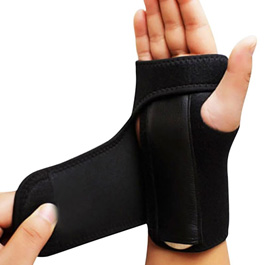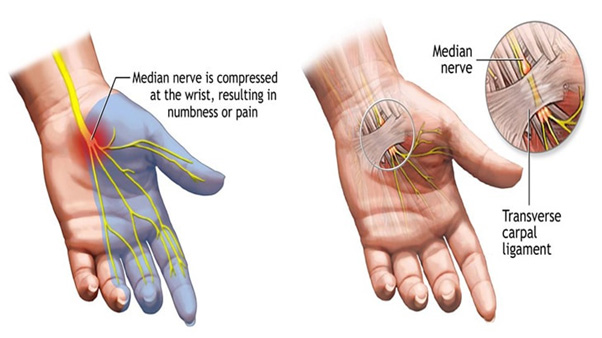Carpal Tunnel Release
Introduction
The carpal tunnel is a narrow passageway on the palm side of your wrist. Small wrist bones known as carpal bones form the bottom and sides of your carpal tunnel. A strong band of connecting tissue, known as the transverse carpal ligament, covers the top of the carpal tunnel.
The carpel tunnel houses the flexor tendons that allow you to bend your fingers, and the median nerve which provides sensation to most of your fingers and hand. Carpal Tunnel Syndrome occurs when the synovium swells and narrows the limited space within the tunnel and compresses the median nerve over time. The transverse carpal ligament can also become thickened resulting in a narrowing of the carpal tunnel space and increasing pressure on the median nerve.

The common medical conditions associated with carpal tunnel syndrome include:
- diabetes
- obesity
- thyroid dysfunction
- fluid retention from pregnancy or menopause
- high blood pressure
- autoimmune disorders such as rheumatoid arthritis
- fractures or trauma to the wrist
Repeated motion of your wrist also contributes to swelling and compression of the median nerve. This may be the result of:
- positioning of your wrists while using your keyboard or mouse
- prolonged exposure to vibrations from using hand tools or power tools
- any repeated movement that overextends your wrist, such as playing the piano or typing
Signs & Symptoms
- Numbness and tingling in the thumb, index, and middle fingers
- Pain and burning in the hand and wrist that may radiate up the arm to the elbow
- Decreased sensation and weakness in the hand with diminished grip strength
- Worsening of symptoms at night
Diagnosis
Your doctor will perform a detailed medical history and physical examination. Further tests may be ordered including an X-ray to view your wrist bones; blood tests to rule out underlying medical conditions such as diabetes, arthritis and thyroid problems, and electrodiagnostic testing (nerve conduction studies & EMG) to assess the speed and degree of electrical activity in your nerves and muscles.
Treatment
Carpel tunnel can be treated with conservative measures. These include:
- Treating any underlying medical conditions, such as diabetes and arthritis
- Your hand and wrist may be immobilized with a splint or wrist brace for 4 to 6 weeks
- Ice packs may be recommended to keep down any swelling
- Avoid activities that tend to bring on the symptoms
- Medication and steroid injections may be used to treat pain and swelling
- You may be referred to therapy to be taught strengthening and stretching exercises.

When conservative treatment options are not effective, surgery may be recommended.
Surgical Procedure
Mini-Open Carpal Tunnel Release Surgery is one type of surgery to treat carpal tunnel syndrome. It is performed as an outpatient Day Surgery procedure.
You will be given a local anaesthetic to numb your hand and wrist. Your surgeon makes a 2-3 cm incision at the base of the palm. Retractors are then used to hold the skin edges apart in order to allow better visualization and exposure of the underlying tissues. The transverse carpal ligament is divided and freed from its underlying tissue. This widens the carpal tunnel and releases pressure from the median nerve. The wound is then irrigated and closed with sutures. A small sterile dressing is then applied over the incision.

Risks and Complications
- Infection
- Damage to the nerves causing weakness, paralysis, or loss of feeling in the hand and wrist area
- Stiffness to the wrist and hand
- Wrist weakness and loss of strength due to injured tendon
- Worsening of symptoms or symptoms not improved after surgery




